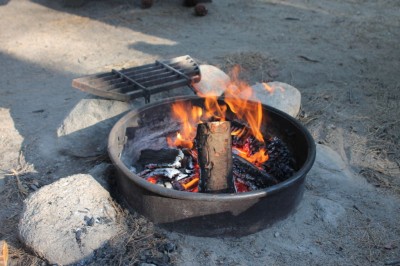
Follow these easy steps to make gluten-free camping easy and enjoyable.
Even as we approach the end of the summer camping season, there are still plenty of adventurers packing their cars full of tents and sleeping bags to travel to remote destinations. If you are among them and you have a special diet, planning meals can be a hassle. As the gluten allergy is becoming more and more common, many products have emerged to fill some of the gaping nutritional holes left for gluten-free diners. But when you are cooking outside, or don’t have access to anything but the local camping site store, gluten-free eating can seem impossible. But fear not—there are plenty of ways to eat well and avoid an allergy attack in the great outdoors.
Pre-shop
Before you travel to the outer reaches of globe, consider stocking up on naturally gluten-free foods. Potatoes, clementines, apples, carrots, celery, and corn on the cob are all cheap and naturally gluten-free foods that don’t need to be refrigerated. They are also easy to prepare and transport. Bringing along hummus or peanut butter can round out your snacking. Also, consider creating your own trail mix or gluten-free breakfast bars before you leave, so that the most gluten-dominated meal of the day doesn’t become your trip’s downfall.
Watch your cooking
Be aware of how things are cooked. Avoid cooking directly on a grill or any other common surface because you don’t know who else has used it, or what they may have cooked. The easiest and safest cooking alternative is to create “hobo packets.” By placing your food inside aluminum foil and throwing it directly on the fire, you’ll still get the smoky campfire taste while protecting yourself from gluten contamination.
Rethink meals
The quick and common camping meal of hot dogs and bun is a nightmare for the gluten-intolerant. Swap your hot dog or burger patty (both of which, if store-bought, are sneaky carriers of gluten) for a piece of grilled chicken instead. Though it may not be as pretty, chicken strips can be easily prepared on a stick, similar to the way most campers cook their hot dogs. Just be careful not to mix up your cooking stick with someone else’s.
Snack smart
Most camping excursions involve a bit of hiking, biking, or other activites that keep you away from your tent. For easy snacking, try a Kit Organic bar or a Boomi Bar instead of the common Clif Bar. If they aren’t available, nuts are a quick and naturally gluten-free alternative. They’ll give you energy and fill you up without taking up too much room in your backpack. Apples and carrots are also durable substitutes, plus they’re easy to transport and unprocessed so there is no accidental gluten ingestion.
Don’t forget dessert
It’s hard not to feel a little disappointed watching other campers make s’mores, the number-one camping dessert. Though you can still roast a marshmallow, it’s a little anticlimactic when your watching your friends crunch into a graham cracker, chocolate, and marshmallow creation and licking their fingers greedily. For something a little more satisfying, try a banana boat. Created easily by slicing a banana down the center and filling it with chocolate, mini marshmallows, or marshmallow pieces, and roasting it over the fire in aluminum foil, this dessert will put old fashion s’mores to shame.
The bottom line is to just be smart. A gluten-attack in the middle of the woods is way worse than one at home, so don’t tempt fate. Stick to your diet, and you are sure to have a great trip.
Image courtesy Wikicommons user Hnhogan

 Your Privacy Choices
Your Privacy Choices
 The
The